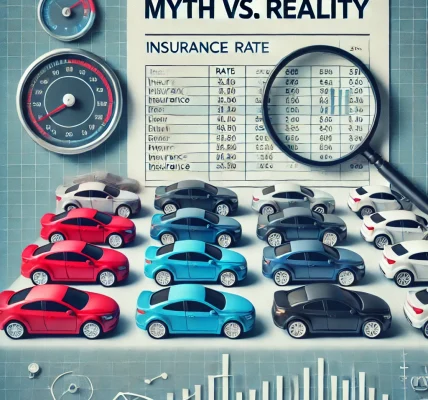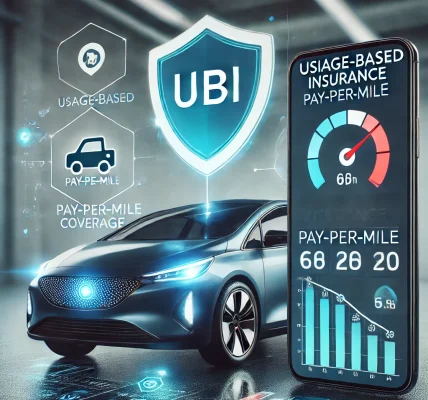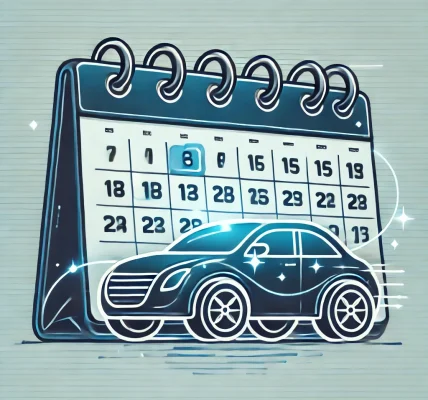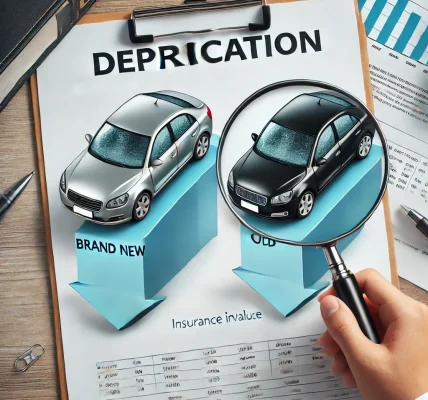Introduction
Car insurance is a crucial aspect of vehicle ownership, providing financial protection against accidents, theft, and other unforeseen incidents. However, there are many myths and misconceptions surrounding car insurance that can mislead drivers into making poor decisions. Believing these myths could result in paying higher premiums, inadequate coverage, or unnecessary stress when filing a claim.
In this blog, we will debunk some of the most common car insurance myths and provide you with factual information to make informed choices.
Myth 1: The Color of Your Car Affects Insurance Premiums
The Truth:
Many people believe that red cars are more expensive to insure because they are supposedly involved in more accidents. However, insurance companies do not consider color when determining premiums. Factors like the car’s make, model, age, engine size, and safety features play a more significant role.
What Actually Affects Premiums?
- Vehicle type and safety ratings
- Driver’s age, gender, and driving history
- Location and frequency of vehicle use
Myth 2: Your Insurance Covers Any Type of Damage
The Truth:
Not all types of damages are covered under a standard car insurance policy. The extent of your coverage depends on the type of policy you purchase.
Types of Car Insurance Coverage:
- Liability Coverage: Covers damages to others but not to your own car.
- Collision Coverage: Pays for damages to your vehicle in case of an accident.
- Comprehensive Coverage: Covers non-collision-related damages like theft, vandalism, or natural disasters.
To ensure full protection, always review your policy and understand what is and isn’t covered.
Myth 3: Your Personal Car Insurance Covers Business Use
The Truth:
If you use your personal vehicle for business purposes, such as deliveries or ridesharing, your standard insurance may not cover any damages incurred during work-related activities.
What Should You Do?
- Inform your insurer if you use your vehicle for work.
- Consider getting a commercial auto insurance policy or rideshare coverage.
Failing to disclose business use may lead to denied claims.
Myth 4: Older Drivers Always Pay Higher Premiums
The Truth:
While younger drivers (typically under 25) tend to pay higher premiums due to inexperience, older drivers may actually receive discounts for their safe driving record and lower accident rates.
Factors That Impact Senior Driver Insurance Rates:
- Good driving history may lower premiums.
- Some states require higher premiums for elderly drivers due to health-related risks.
- Taking a defensive driving course can help seniors reduce costs.
Myth 5: A Minor Accident Won’t Affect Your Premiums
The Truth:
Even a small claim can increase your insurance premium. While some insurers offer accident forgiveness for the first minor accident, frequent claims may label you as a high-risk driver.
How to Avoid Higher Premiums?
- Consider paying out-of-pocket for minor repairs if it’s cheaper than the deductible.
- Ask about accident forgiveness programs.
- Drive safely to avoid future accidents.
Myth 6: Insurance Follows the Driver, Not the Car
The Truth:
In most cases, car insurance follows the vehicle, not the driver. This means that if someone else is driving your car and gets into an accident, your insurance policy may still be responsible for the damages.
Exceptions:
- Some policies allow permissive use, meaning certain drivers may be covered.
- If the person driving is excluded from your policy, the claim may be denied.
Always check with your insurer before letting someone else drive your car.
Myth 7: Comprehensive Coverage Means Everything is Covered
The Truth:
Comprehensive coverage protects against non-collision-related damages, such as theft, vandalism, fire, and natural disasters, but it does not cover:
- Collision damages (accidents with another vehicle or object)
- Mechanical breakdowns
- Wear and tear
For complete protection, consider combining comprehensive coverage with collision and liability coverage.
Myth 8: If Another Driver Hits You, Their Insurance Will Automatically Cover Everything
The Truth:
While the at-fault driver’s insurance should cover your damages, this process is not always smooth. The insurer may dispute liability, delay the claim, or offer lower compensation.
What Can You Do?
- Gather evidence at the accident scene (photos, witness statements, police report).
- Contact your insurance provider to understand your options.
- Consider uninsured/underinsured motorist coverage for added protection.
Myth 9: A Lapse in Coverage Won’t Affect Future Premiums
The Truth:
If your insurance policy lapses due to non-payment or any other reason, insurers may view you as a higher risk when you try to get coverage again.
How to Avoid a Lapse?
- Set up auto-pay for your premiums.
- Inform your insurer if you’re switching policies to avoid gaps in coverage.
- If you don’t drive for an extended period, consider non-owner car insurance instead of canceling coverage.
Myth 10: Full Coverage Means You Never Have to Pay Anything Out-of-Pocket
The Truth:
Even with full coverage, you may have to pay deductibles, co-pays, or expenses exceeding policy limits.
How to Minimize Out-of-Pocket Costs?
- Choose a policy with a low deductible, but keep in mind that lower deductibles often mean higher premiums.
- Understand your policy’s coverage limits.
- Consider optional add-ons like roadside assistance or rental car reimbursement.
Conclusion
Car insurance myths can lead to misunderstandings, unnecessary expenses, and inadequate coverage. By debunking these misconceptions and staying informed, you can make better decisions about your car insurance policy, ensuring that you receive the protection you need without overpaying.
Always read your policy carefully, ask your insurer about specific coverages, and stay updated on industry changes to avoid falling for these common myths. The more you know, the better protected you’ll be on the road!



